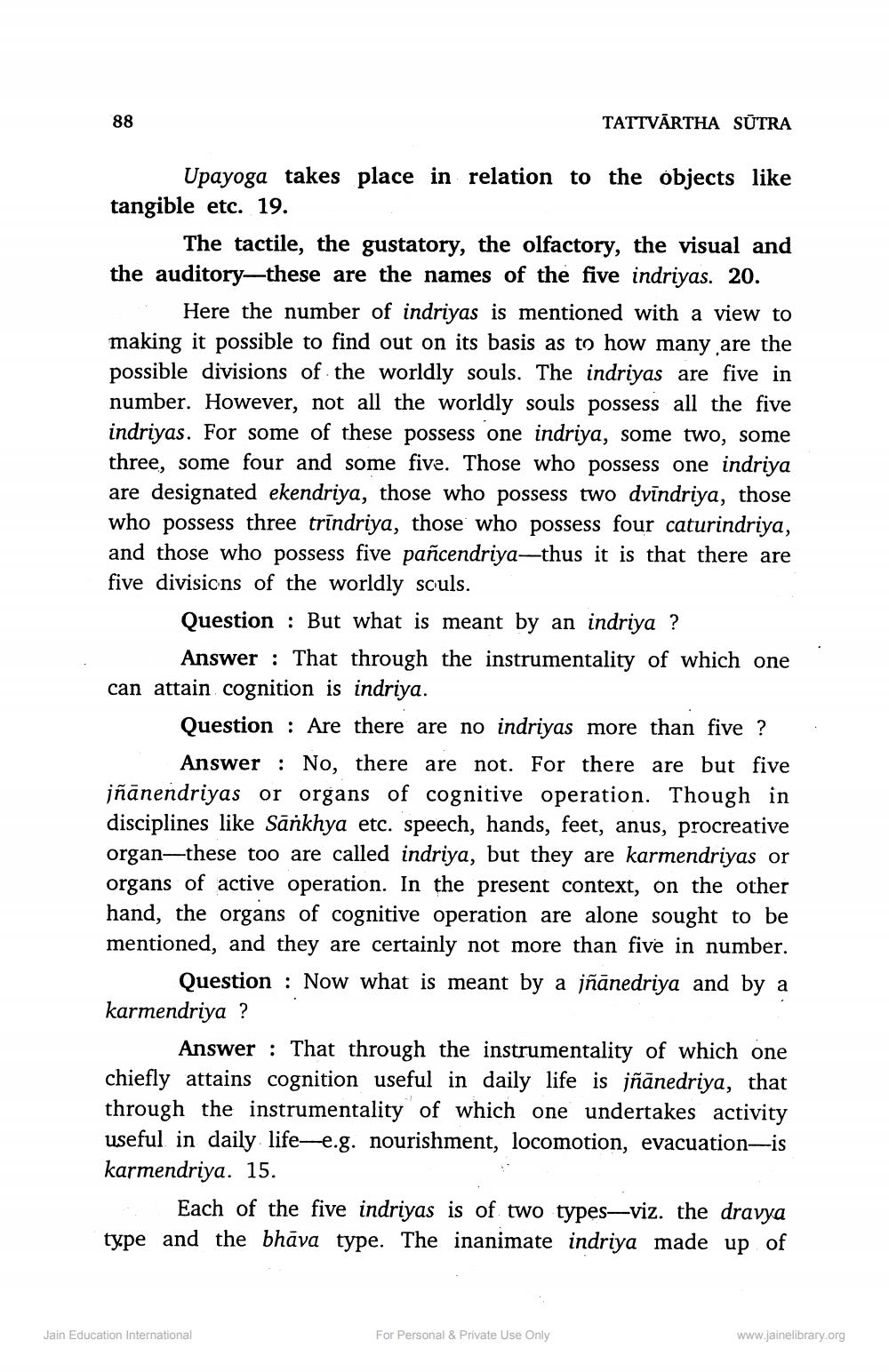________________
88
TATTVĀRTHA SŪTRA
Upayoga takes place in relation to the objects like tangible etc. 19.
The tactile, the gustatory, the olfactory, the visual and the auditory—these are the names of the five indriyas. 20.
Here the number of indriyas is mentioned with a view to making it possible to find out on its basis as to how many are the possible divisions of the worldly souls. The indriyas are five in number. However, not all the worldly souls possess all the five indriyas. For some of these possess one indriya, some two, some three, some four and some five. Those who possess one indriya are designated ekendriya, those who possess two dvīndriya, those who possess three trīndriya, those who possess four caturindriya, and those who possess five pañcendriya—thus it is that there are five divisions of the worldly sculs.
Question : But what is meant by an indriya ?
Answer : That through the instrumentality of which one can attain cognition is indriya.
Question : Are there are no indriyas more than five ?
Answer : No, there are not. For there are but five jñānendriyas or organs of cognitive operation. Though in disciplines like Sāňkhya etc. speech, hands, feet, anus, procreative organ—these too are called indriya, but they are karmendriyas or organs of active operation. In the present context, on the other hand, the organs of cognitive operation are alone sought to be mentioned, and they are certainly not more than five in number.
Question : Now what is meant by a jñānedriya and by a karmendriya ?
Answer : That through the instrumentality of which one chiefly attains cognition useful in daily life is jñānedriya, that through the instrumentality of which one undertakes activity useful in daily life-e.g. nourishment, locomotion, evacuation-is karmendriya. 15.
Each of the five indriyas is of two types—viz. the dravya type and the bhāva type. The inanimate indriya made up of
Jain Education International
For Personal & Private Use Only
www.jainelibrary.org




